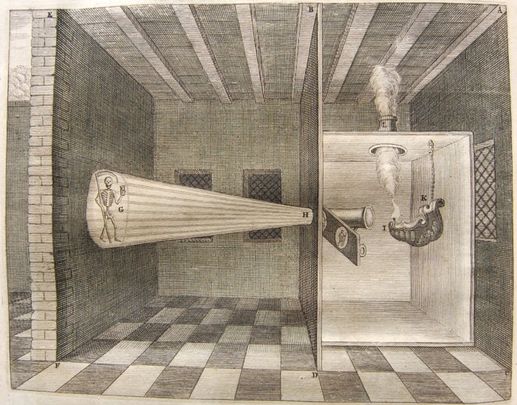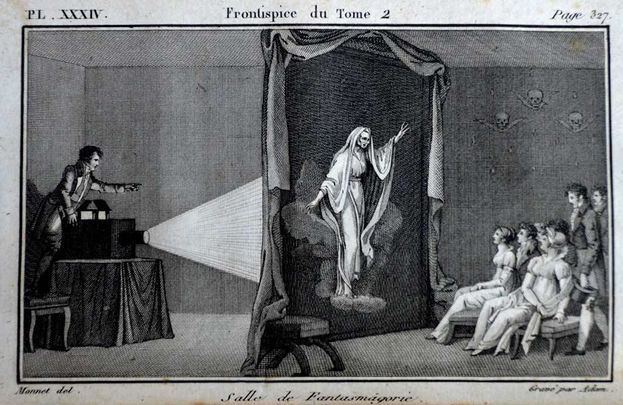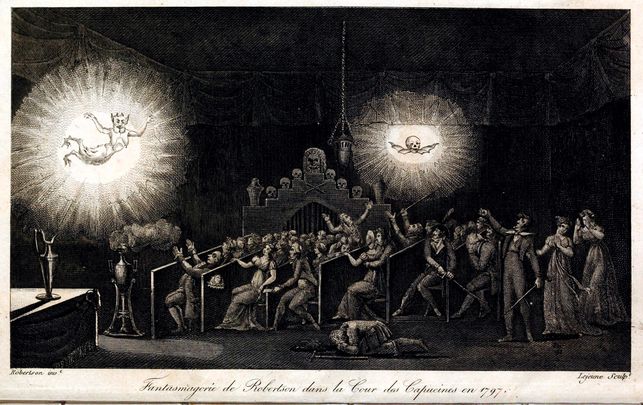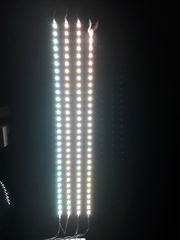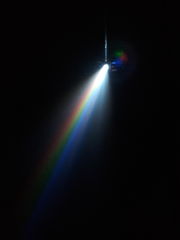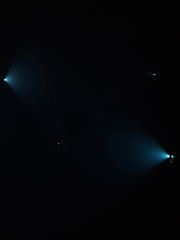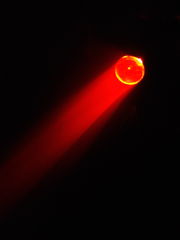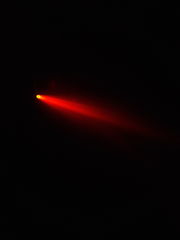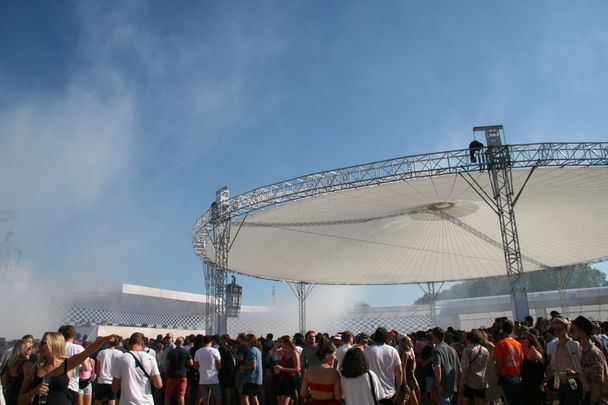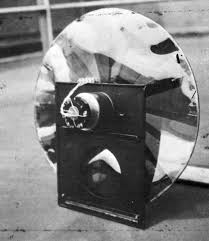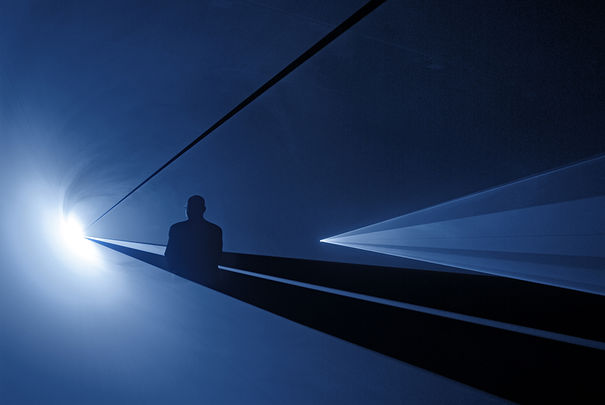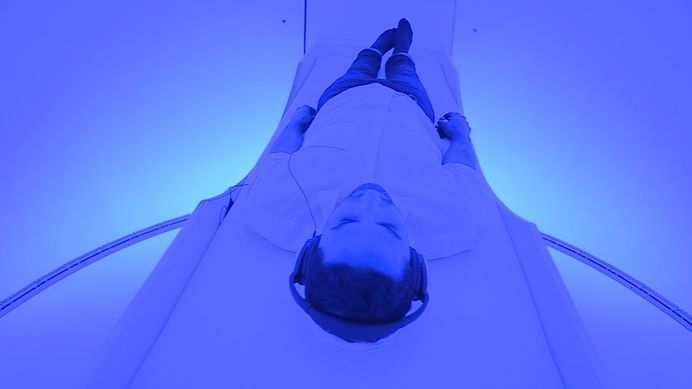User:Zalán Szakács/projectproposal4
Graduation Project Proposal Final
22 | 11 | 18
Eigengrau
What do you want to make?
I am fascinated by the epoch of the 18th century, the precursor to the epoch of the cinema, where humans created different spatial illusional archetypes through the invention of a multi-sensorial experience: Phantasmagoria, an audio-visual dialogue between the living and the dead. 1 (Mannoni, 2000) This projection apparatus was the further development of Magic-latern, that achieved mobility and moved silently. The projections appeared in different sizes, while creating a motion-effect on the smoke, so that they looked more aerial and more ghostly. As a result this opened up the virtual depth of the image space as a sphere of dynamic changes for the first time. 2 (Grau, 2007) The public was entertained by subjects such as the supernatural, where mythological monsters, scenes from Gothic novels, and references to contemporary politics were the main inspiration sources.
My goal is to reinterpret this media object into our contemporary context by using new technological developments and searching for the answer for the following question:
How are media objects interpreted as phantasmagoria in the contemporary context?
Therefore I would like to explore the integration of new media and technologies in spiritualist contexts. The research is tracing back the passage from the supernatural to the technological, and the technological to the neurological: the phantoms move from outside to inside. The human nervous system becomes the apparatus through which the phantasm is produced.
Eigengrau, the title of the audiovisual installation is derived from German origin meaning ‘dark light’ or ‘brain grey’. In 1860 the German psychologist Gustav Theodor Fechner (1801–1887) introduced this term to denote the disorganised motion of greyish colour seen in perfect darkness.
This performative work will communicate through atmospheres, and is designed to immerse the viewer into an unnerving experience – a multi-sensory abstracted space, that embraces our feelings of anxiety, invokes the power of the invisible and changes our perceptions through space, light, smoke and sound. Since Phantasmagoria was established for entertainment purposes–my goal is to position the installation into the club context for creating a transcendental space for body and soul, while establishing the notion of omnipresence.
How does this work differentiate itself from other light installations?
Eigengrau is built on a conceptual foundation that stands on three main pillars:
- The reinterpretation of the media object, phantasmagoria into our contemporary context by using new technological developments;
- the research draws a link between the supernatural of the 18th century and our society;
- the relocating the work into the entertainment-club context.
It aims to have a critical view on interaction, where the use of technology becomes a tool to be able to reflect conceptually on our zeitgeist. Through the use of limited tools, the work aims to create a strong impact on the viewers.
How do you plan to make it?
I am inspired by the work methodology of artist James Turrell, who has been working closely with the field of perceptual psychology. In essence my goal is to set up a dark room laboratory to be able to undertake weekly experiences with different LED strips, haze, and sound. Through these hardware sessions the different characteristics of light will be analysed such as speed, luminance, colour, motion, rhythm, structure and vibration. These tests would help me to formulate conclusive answers to my main question, which would create a substantial foundation for the final installation. In parallel it is important for me to investigate literature research about the themes of media, archaeology, philosophy, psychology, light, brain, emotions, space, human perception and technology. I consider myself to belong to the tradition of artists who use experiments to create aesthetic experiences.
What is your timetable?
September – October 2018: Research + Prototyping
November – December 2018: Prototyping & human testing with sensors, some parts are in 1:1 scale
January – February 2019: Finalisation of the installation parts: technical drawing, final software
March – April 2019: Production of the final installation
May 2019: Testing and documenting the process
June 2019: Buffer time
July 2019: Graduation Show
Why do you want to make it / Relation to previous practice
I have been working as a visual jockey since 2012 starting in the underground rave parties of Vienna and moving up to club and festival nights later on. This year I took new steps in my audiovisual practice and was more interested in the conceptual and perceptional approach behind my visuals: How can I play with space, brightness, time and perspective? How can I create a dialogue between the sound and the visual, while only using a very minimalistic formal language? How can I break out of the traditional frame format and find other alternatives for it? How could my visuals become a political act?
During the summer of 2018 I performed at two festivals: Dekmantel in Amsterdam and Atlas Electronic in Marrakech. Through working as a VJ assistant for the Dutch light artist, Arnout Hulskamp at Dekmantel festival I came to understand the time factor related to space. My first encounter of the physical characteristics of light was at Atlas Electronic festival, where I projected a white cone, and through the smoke it created a tunnel between the lens of the projector and the display wall. This discovery lead me to a new fascination of how I can encompass more spatial illusions and disorientations by only using three main elements such as a dark space, light and smoke.
I started a theoretical research about the precursors of projectors and came across Phantasmagoria. The mysterious context around this media apparatus started to trigger my fascination and curiosity. Plunged into darkness and assailed by unearthly sounds, spectators were subjected to an eerie, estranging, and ultimately baffling spectral parade. The illusion was apparently so convincing that surprised audience members sometimes tried to fend off the moving "phantoms" with their hands or fled the room in terror. 3 (Castle, 1988)
When we talk about phantasmagorias it is important to underline its immersive characteristics and its significance for the field of media art by citing the words of the German art historian and media theoretician, Oliver Grau: ‘The phantasmagoria can be understood as a media principle that suggests that contact can be made with the psyche, the dead, or artificial life forms. It is therefore necessary to expand McLuhan’s theory. Addressing emotions and paranormal human experiences with magical means stems from the insecurity produced by the technological utopia.’ 4 (Grau, 2007)
The digital developments of the twentieth century brought mankind new spatial perception such as Cyberspace. ‘This space appears to be real and at the same time is not geometric nor real in any physically determined way. We use completely new concepts to visualise or understand this space: rhizomes, networks consisting of nodes without any hierarchy.’ 5 (Rekveld, 2007) In 1970 the Artist Dan Graham coined the term “cyberspace” by which he meant a space that is meditated through the feedback technology of video tape. It was Graham who – 11 years before William Gibson used it – coined the term “cyberspace” to describe the new inter-subjective technological space created by the interaction of humans within a video mediated circuit” 6 (William Kaizer, 2008)
After the millennium, humans desired new understandings of spatial concepts – a hybrid space of the physical and virtual. These physical environments built by digital components such as custom made softwares, sensors, and digital interactions, where the digital merges with the physical, creating an infinite interwoven feedback loop. Human senses are triggered by these elements, while creating new sensory experiences. These have been deeply researched and experimented by scientists and cybernetic artists in 1950’s such as Gordon Pask with his Musicolour performances, who described it as, the performer “trained the machine and it played a game with him. In this sense, the system acted as an extension of the performer with which he could cooperate to achieve effects that he could not achieve on his own”. 7 (Gordon, 1971)
Reflecting on the work by the artist Brion Gysin and William S. Burrough’s “system adviser” Ian Sommerville the Dreamachine, inspired and created after reading the book by the British neurophysiologist William Grey Walter, ‘The Living Brain’. Gysin, Burrough and Sommerville achieved new neurological aftereffects by using the dual structure of the shifting after-image and fickering interruption to produce a virtually experienced moving image, the perceptual cell embodies what theorist Friedrich Kittler called the two “theoretical conditions of cinema” that have occupied both scientists and philosophers of vision since the nineteenth century and that preceded the development of film technology. 8 (Gadassik, 2016) Through the technology phantoms were not anymore visible outside, rather inside of the human brain.
Who can help you and how?
For technical and hardware questions I would like to ask for help from one of the tutors from the Interaction Station at WdKA, Javier Lloret, who has a lot of experience in field of Arduino, Processing and LED. For composition and architectural setup I am planning to discuss it with the light artist group Children of the Light (Arnout Hulskamp & Christopher Gabriel).
For theory and concept development my goal is to ask for opinions and bibliographical advices from one of my tutors, Steve Rushton, and from the Austrian art historian, Eva Fischer, who has a lot of expertise in the field of media art installations.
For sound design development I will collaborate with the talented French sound-designer Sébastien Robert, and sound technology will be developed together with the Amsterdam based 4D sound system group.
Relation to a larger context
Eigengrau could be positioned in the field of the crossover of media art and technology, while following the tradition of artists such as James Turrell, Anthony McCall, United Visual Artists and festivals such as Ars Electronica, Japan Media Arts Festival, Atonal Berlin.
References
Reading
Sources
1 Mannoni, Laurent, "The Great Art of Light and Shadow - Archaeology of the Cinema, University of Exeter Press, 2000
2 Grau, Oliver, "Media Art Histories", The MIT Press, 2010
3 Castle, Terry, "Phantasmagoria: Spectral Technology and the Metaphorics of Modern Reverie", The University of Chicago Press, 1988
4 Grau, Oliver, "Media Art Histories", The MIT Press, 2010
5 Joost Rekveld 2007, Mental Spaces, viewed 15 October 2018, <http://www.joostrekveld.net/wp/?page_id=590>
6 Kaizen, William, "Steps to an Ecology of Communication: Radical Software, Dan Graham, and the Legacy of Gregory Bateson; Art Journal", Vol. 67, No. 3, 2008
7 Pask, Gordon, “A Comment, a Case History and a Plan,” in J. Reichardt (ed.), Cybernetics, Art, and Ideas (Greenwich, CT: New York Graphics Society), 1971
8 Gadassik, Alla, "Perceptual Cells: James Turrell’s Vision Machines Between Two Paracinemas", Leonardo, Volume 49, Issue 4, August 2016, 2016


